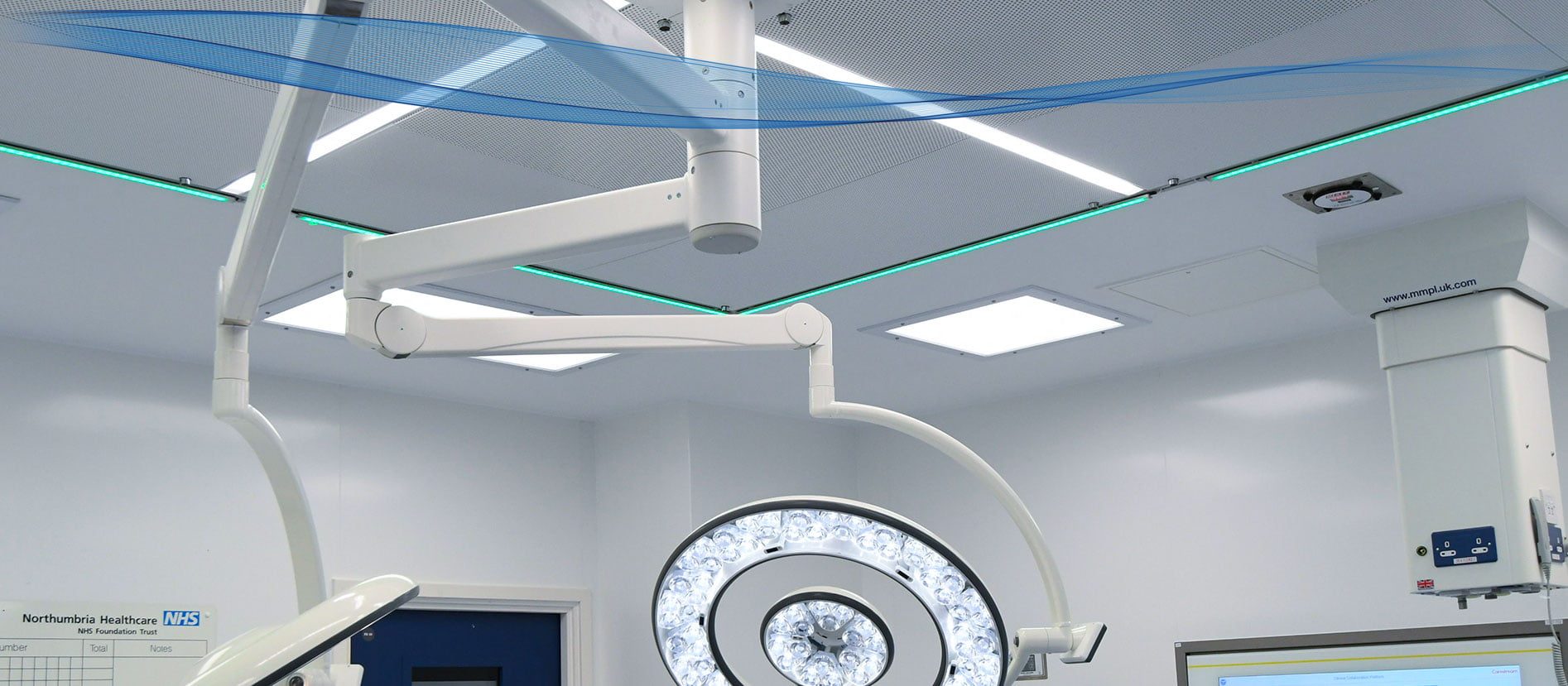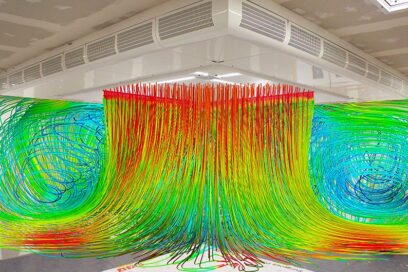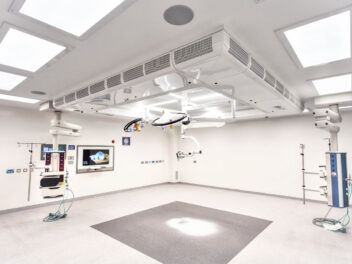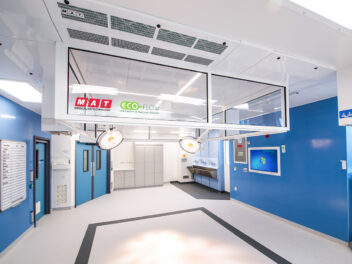

Medical Air Technology
Ultraclean ventilation - Fighting infection for over fifty years
English surgeon Sir John Charnley pioneered hip replacement surgery in the 1960s. However, the huge number of wound infection cases drove him to look into how to reduce bacterial contamination during surgery. He developed an enclosure around the operating zone into which filtered air could be passed. This was then improved to deliver better air handling and incorporate a diffusion system that allowed the passage of a larger flow of ventilated air.
Since his ground-breaking work, laminar airflow, or the use of a directional flow of air to create a clean zone over the patient during orthopaedic surgery, has dramatically reduced post-operative infection rates in hospitals throughout the world. In the MAT ECO-flow ultraclean ventilation (UCV) system, laminar flow has given way to graded exponential airflow, which is even more efficient at keeping the air around the patient and surgical team free from dangerous pathogens.
Ventilation in operating suites
DV4 ventilation in operating departments
HTM 2025 Ventilation in Healthcare Facilities
HTM 03-01 Specialised Ventilation for Healthcare Premises
HTM 03-01 Specialised Ventilation for Healthcare Premises – Updated
Ultraclean ventilation (UCV)
An open wound can present the ideal place for germs to settle and breed, causing infection. The ECO-flow ultraclean ventilation (UCV) system is a proven and effective way to clean the air in operating theatres, supporting good working practices and theatre design and dramatically reducing the risks of surgical site infection (SSI).
Ultraclean ventilation (UCV)
An open wound can present the ideal place for germs to settle and breed, causing infection. MAT’s ECO-flow ultraclean ventilation (UCV) system is a proven and effective way to clean the air in operating theatres, supporting good working practices and theatre design and dramatically reducing the risks of surgical site infection (SSI).

The benefits of upgrading to ultraclean
- Adaptability – an ultraclean theatre can be used for a wider range of surgery, converting from general to ultraclean in under an hour
- Combatting HCAI - when used in combination with good pre-operative, intra-operative and post-operative measures, UCV plays a critical role in the fight again healthcare associated infections (HCAI)
- Flexibility – modern UCV canopies, particularly the new screenless and flush-to-ceiling models, integrate with the increasingly popular hybrid and integrated theatres, complementing the latest developments in theatre design and the movement towards equipping theatres with imaging equipment, lasers, endoscopy equipment, robotics etc
We know that UCV works. HTM 03-01 confirms that the link between surgical site infection and theatre air quality is well established:
“…ultra-clean ventilation systems (which are designed to provide a zone around the patient that is effectively free of bacteria-carrying airborne particles while the operation is in progress) have been shown to significantly reduce surgical site infection in patients undergoing large joint replacement surgery.”
Ultraclean ventilation terminology
- Integral Fan Model – Self-contained UCV - 4 x integral recirculation fans mounted in air terminal unit containing return air pre-filters, attenuation, final filters air diffuser and integral lighting
- Hybrid Remote Fans Model – Hybrid UCV - 4 x remote recirculation fans mounted in corners of room above ceiling or slab, attenuation in supply ductwork in ceiling void and return ductwork in each corner. Separate air terminal unit with final filters, air diffuser and integral lighting.
- Remote Fan Model – Remote UCV - single combined fan located outside of the operating room. Separate air terminal unit with return air pre-filters, attenuation, final filters, air diffuser and integral lighting.
Investment versus savings
NICE has reported that SSI represents significant costs to the NHS, ranging from £2,100 to £10,500 per infection, depending on the nature of the surgery.
Expert opinion suggests that costs can be as high as £20,000 per surgical site infection for complex surgery and up to £14,000 for more general surgery. It has been estimated that the total cost to the NHS is around £700m a year. Treatment of patients with SSI also reduces the capacity to treat other patients, creating a further inefficiency.
From these figures, it’s clear that the costs of revisionary surgery to treat SSI can far exceed the cost of the original surgery, as well as causing untold stress for patients and possible future health concerns.
On this basis alone, a UCV canopy more than pays for itself, with purchase and running costs offset against the money saved by lower post-operative SSI rates, less revisionary surgery and shorter hospital stays.
At MAT, we are proud to be part of the history and ongoing evolution of ultraclean technology.
We are very happy with the work carried out by MAT. Throughout the project, we appreciated the benefits of working with a company with such a thorough understanding of surgical site infection and a portfolio of products designed to address it.”
Andrew Jones: Director of Hospital Services, Fairfield Independent Hospital
MAT is large enough to cope with any issues but small enough to care, and this was evident throughout. It was a pleasure to work with MAT and the team that was assembled for the project at LSHTM, and we hope to have the opportunity to work together again.”
John Starmer: Estates Director, London School of Hygiene & Tropical Medicine




